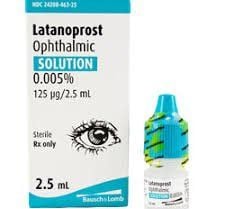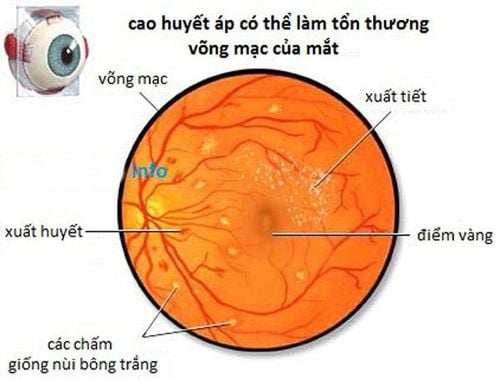This is an automatically translated article.
The article is professionally consulted by Specialist Doctor II Nguyen Thai Hung - Department of Medical Examination & Internal Medicine - Vinmec Danang International General Hospital. Specialist II Nguyen Thai Hung has 13 years of experience as a doctor treating eye diseases.Farsightedness is one of the most common refractive errors. Although farsightedness is less common in children than nearsightedness, it can cause severe visual dysfunctions such as amblyopia, strabismus, and binocular vision dysfunction. Parents should be wary of farsightedness in children if their children have abnormal signs mentioned in the article below.
1. What is farsightedness in children?
Normally, the image of things when passing through the optical system of the eye will be properly focused on the retina, helping the eye to see everything clearly. However, due to the abnormality of the refractive system, the image of the object is not focused on the retina, but behind the retina. To see more clearly, the eyes of children with farsightedness always have to adjust to increase the refractive force to bring the image of the object forward and on the retina.In optical terms, farsightedness means that when looking at a distant object, the image appears behind the eye, not on the retina. Like taking a photo, when measuring the distance is not correct, the image will appear behind the film and be blurred. In contrast to myopia, the image appears in front of the retina due to too much focus of the eye, while farsightedness is caused by the eye having weak focus. With mild farsightedness, the child's eyes can adjust to see clearly the image of the object, but it is easy to get eye strain. In children with severe farsightedness, their eyes cannot adjust, leading to blurred vision both at far and near distances.
Farsightedness in children has two types:
Refractive farsightedness: Because the refractive force of the cornea and crystalline lens is low, while the length of the eyeball axis is still normal. This type of disease usually causes only mild farsightedness. Axial hyperopia: Because the eyeball axis is too short while the refractive force of the cornea and lens is still normal. This type of disease often causes severe farsightedness in young children.
2. Causes of farsightedness in children

Đâu là nguyên nhân gây ra bệnh viễn thị ở trẻ em?
Normally, newborn babies are always farsighted. However, a child's farsightedness will gradually decrease as the child grows older. By the age of 2-3 years, the farsightedness is about 3 degrees, but if at this age, the child's eyes do not or little develop, the child will be farsighted. Farsightedness is common at the age of starting primary school.
3. Recognizing children with farsightedness
Children read books or look closely, or have eye strain, eye pain, headache, sometimes, children even have red eyes if they try to look for a long time. Children's eyes gradually tend to turn inward to make them squint.If there are these symptoms, parents need to take the child to see an ophthalmologist for a definitive diagnosis. The child's farsightedness can be determined by looking at the pupil. Note, in children can only perform pyloroscopy after atropine has been instilled in the eye.
4. Is farsightedness in young children dangerous?
Children may complain of eye pain, blurred vision because the eyes are always regulated, the muscles in the eye always have to pull to make the vitreous bulge, increasing the refraction. The consequence of the adjustment is that the eyes are always sore and uncomfortable. Because children's eyes often over-accommodate leading to an imbalance between accommodation and focus, children's eyes are often crossed and the child may see with only one eye. The result is amblyopia (inability to see clearly despite maximal correction of presbyopia).Amblyopia can occur in both eyes or in one eye, especially in eyes with more severe farsightedness. Amblyopia reduces the visual function of both eyes such as: Not seeing stereoscopic images, determining the distance of objects accurately, affecting later life,... However, simple farsightedness does not cause damage. fundus degeneration, only cases of farsightedness due to underdevelopment of the eyeball, hyperopia accompanied by other eyeball structural disorders (such as ROP, ...) will have damage to the fundus.
5. Treatment of farsightedness in children

Phương pháp điều trị bệnh viễn thị chủ yếu là đeo kính
The main method of treating presbyopia is wearing glasses. The wearing of advanced presbyopia glasses must be accompanied by an active eye training regimen to reduce presbyopia. Children need to be encouraged to engage in visual activities such as painting, coloring, reading stories, etc. to increase the refractive index of the lens and reduce farsightedness (nearsightedness).
For children with amblyopia, it is necessary to have an active training regime (blind training for amblyopia, training on macular stimulator systems or binocular vision training machines,...). The most popular exercise is on the Synophore machine, the macular stimulator when there is amblyopia or high farsightedness. Even after the treatment has been cured, amblyopia still needs to be maintained to avoid recurrence. If the presbyopia is low, without amblyopia, the main treatment is to wear presbyopia regularly.
With active treatment and exercise, farsightedness will gradually decrease, vision will gradually increase, amblyopia will be improved. In addition, children need to be treated for strabismus (if any). According to experts, children need to be monitored for at least every 6 months to adjust glasses accordingly.
Ophthalmology of Vinmec International General Hospital is a department specializing in eyes and eye-related diseases such as: trachoma, blepharitis, eye strain, corneal detachment, Eales disease, Glaucoma, retinopathy, nearsightedness visual impairment, visual impairment, cataract, stye, strabismus, refractive error, astigmatism, chromosomal disorder, glaucoma,... The department has the function of comprehensive eye and vision health care for children , adults and the elderly include refractive error screening, physical examination, diagnostic ultrasound, laser therapy, and surgery. In addition, ophthalmology also has the task of coordinating with other clinical departments in the treatment of pathological complications and eye injuries caused by accidents.
Any questions that need to be answered by a specialist doctor as well as if you need to be examined and treated at Vinmec International General Hospital, please book an appointment on the website for the best service.
Please dial HOTLINE for more information or register for an appointment HERE. Download MyVinmec app to make appointments faster and to manage your bookings easily.













